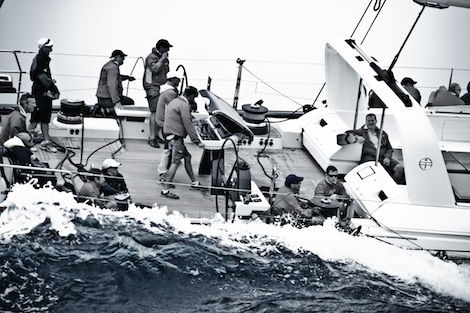Ballast water treatment gets more flexible timeline
The IMO this week relaxed the implementation timeline for the Ballast Water Management Convention, which affects any yacht using seawater ballast. Fresh water ballast systems may offer a solution…
The convention’s rules, which will apply to superyachts use water ballast, are intended to prevent the spread of invasive species via the ballast tanks of international ocean-going vessels.
According to the commercial shipping intelligence website ctech, at a recent conference in Copenhagen, Panama's IMO representative indicated that the country would ratify the convention if the resolution passed. Panama’s ratification would push the BWM Convention over the edge of the 35% tonnage requirement.
New-build superyachts, because of their operational profile, tend not to take on and discharge large enough amounts of weight to require a water ballast system. However, some yachts do use seawater ballast: Yachts that have been converted from commercial vessels; sailing yachts like Perini Navi’s P2, which uses 7 tonnes of seawater ballast to improve her upwind angle, and the largest yachts, such as those built at German shipyard Lürssen. Other vessels use fresh water, which technically, is still covered under the convention.
Under the BWM Convention, the vessel’s flag administration can apply for an equivalent compliance for recreational craft with a ballast water capacity of less than 8m3 (8 tonnes).
The convention will eventually require all vessels that use water ballast to have a treatment system, plan and reporting book—and as with exhaust-gas treatment systems, the options available are not designed to fit superyacht technical spaces.
Vessels that are given the equivalence would not have to fulfill all the requirements of the convention, but they would still need to avoid spreading invasive alien species through ballast water. See all the exceptions and exemptions for regulations A-3 and A-4 in the guidelines (G3) available for download, at bottom.
For yachts with more than 8m3 of seawater ballast, or that do not qualify for equivalence or exemptions, the timeline for compliance (which in many cases implies installation of a ballast water management system, but can also be achieved by alternative means such as discharging ballast water to port reception facilities etc.) is ship specific, based on the year of construction and ballast water capacity. One possible option to avoid the burden of compliance is to engineer freshwater ballast systems that disburse yachts’ large quantity of fresh water to adjust trim and heel; though experts contacted for this article remain in debate as to whether that solution will work.
Chris van Hooren, technical and environmental director of SYBAss, agreed that this was a possible course of action. “Yachts only carry consumables and hence the amount of water ballast, if at all needed, will be small and mostly used to control trim or heel during changing consumable situations. In such cases the use of drinking water for ballast may be a much simpler solution.”
See the document (MEPC_65-2-14) addressing the use of drinking water as ballast water. The Committee submitted the document to the Review Group who reported on the subject in paragraphs 17 to 24 of the document (MEPC_65-WP.7-Rev.1.) The Committee approved the action plan as set out in paragraph 24 of that document (par. 36.5).
However, under the current rules, ‘ballast water’ is any water taken on board a vessel to trim or ballast the vessel. That would include freshwater from reverse osmosis plants aboard. There is clearly a grey area... how much shifting of fresh water between cleverly-situated tanks qualifies as ballast?
The convention has not yet been ratified and it is still possible that changes will be made. More information on this subject may be available at MEPC_66 in April next year.
Download our collection of the pertinent documents here.
photo credit: © Justin Ratcliffe 2013
NEW: Sign up for SuperyachtNewsweek!
Get the latest weekly news, in-depth reports, intelligence, and strategic insights, delivered directly from The Superyacht Group's editors and market analysts.
Stay at the forefront of the superyacht industry with SuperyachtNewsweek
Click here to become part of The Superyacht Group community, and join us in our mission to make this industry accessible to all, and prosperous for the long-term. We are offering access to the superyacht industry’s most comprehensive and longstanding archive of business-critical information, as well as a comprehensive, real-time superyacht fleet database, for just £10 per month, because we are One Industry with One Mission. Sign up here.
NEW: Sign up for
SuperyachtNewsweek!
Get the latest weekly news, in-depth reports, intelligence, and strategic insights, delivered directly from The Superyacht Group's editors and market analysts.
Stay at the forefront of the superyacht industry with SuperyachtNewsweek




